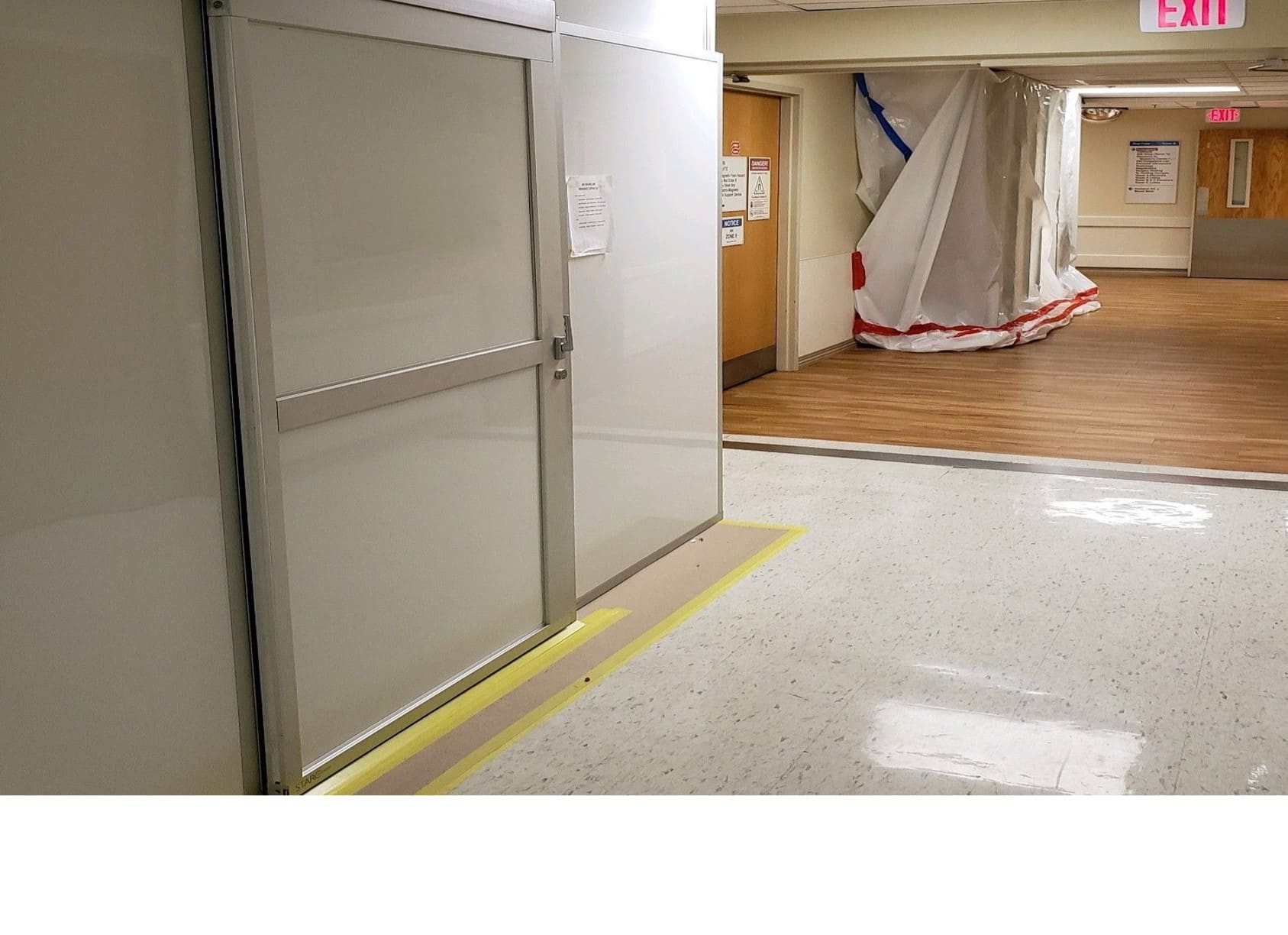
If you’ve ever walked onto a renovation site and seen plastic sheeting with a zipper slapped onto it, you’ve met the zippered wall. And sure, at first glance, it seems like a clever shortcut. Light. Flexible. Cheap. A kind of “pop-up” construction barrier you can install before your coffee cools.
But when the goal is actually containing dust, noise, and debris in an active facility? Zippered walls go from “quick fix” to “quick fail.”
Let’s break down why.
What exactly are zippered walls?
Zippered walls are essentially plastic sheeting or thin poly panels with sewn-in or taped-on zipper openings that create makeshift “doorways.” Contractors often use them for short-term dust control in offices, small remodels, or maintenance work where budget—not performance—drives the decision.
They’re popular because they’re:
- inexpensive
- easy to carry and store
- fast to install
- familiar
In theory, they create a temporary barrier that still allows access to the work area. In practice? They behave more like a suggestion than a real wall.
Why do zippered walls fail containment tests?
On paper, they look like a convenient way to seal off a work area, but the reality is that most zippered walls simply aren’t built to handle real-world renovation demands.
1. Zippers = built-in air leaks
It’s right there in the name—a zippered wall includes a long, flexible opening that’s almost impossible to seal tightly. Air leakage around the zipper is common, and with that air goes dust and, in healthcare environments, potentially dangerous airborne contaminants.
If your goal is a solid pressure differential for ICRA 2.0™ compliance, a zipper is… not your friend.
2. Plastic tears (especially around high-traffic access points)
Workers move equipment in and out. Negative air machines tug against the sheeting. Someone bumps the barrier with a ladder. The result? Rips and holes that compromise the barrier (and your containment plan) long before inspection. A single tear can undo the entire system.
3. Poor noise control
Plastic sheeting doesn’t block sound. At all. That means every saw, hammer, and vacuum reminds occupants that a project is happening right on the other side—the opposite of a professional experience.
4. They don’t meet ICRA or ASTM requirements
In healthcare, airports, and many occupied commercial spaces, the standard is clear: airtight, durable, tested assemblies that maintain pressure, block dust, and withstand real-world use. Zippered walls just aren’t engineered to deliver that level of performance.
5. They look temporary because they are
Even when perfectly installed, zippered walls look like a workaround. And when you’re working in patient areas, customer spaces, or executive offices, appearances matter. A clean, stable, real-wall look influences how people perceive the entire renovation.
A better alternative: reusable wall systems that actually contain the mess
Leading temporary wall systems, like STARC’s RealWall™ and LiteBarrier™, solve every limitation zippered walls struggle with:
- Airtight seals (top, bottom, and between panels)
- ICRA Class IV/V performance for healthcare environments
- Clean, professional appearance that blends into occupied spaces
- Fast installation—100 feet in an hour
- Durable, reusable panels that hold up over dozens of projects
- Noise reduction up to 50% (RealWall)
No tearing. No leaking. No “fingers crossed” before an inspection. Just reliable performance every time.
Bottom line: zippered walls aren’t failing because people use them wrong. They’re failing because they were never engineered for the level of safety, cleanliness, and professionalism today’s occupied renovations require. When the stakes include patient safety, customer experience, brand reputation, and code compliance, you need a barrier that performs like a real wall—not one that behaves like a shower curtain with a zipper.
Plastic sheeting has a place, but it’s a small one. When image, safety, or compliance matter, professionals choose temporary wall systems that look better, install faster, and perform longer.
If zippered walls are your Plan A, it might be time for an upgrade. Explore how STARC’s reusable wall systems help you pass every test, from compliance to client satisfaction.
Want to discuss a specific project? Talk to a STARC temporary wall expert.
